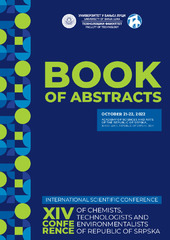Приказ основних података о документу
The characterisation of silymarin and silibinin loaded liposomes
| dc.creator | Jovanović, Aleksandra A. | |
| dc.creator | Dinić, Svetlana | |
| dc.creator | Uskoković, Aleksandra | |
| dc.creator | Arambašić Jovanović, Jelena | |
| dc.creator | Grdović, Nevena | |
| dc.creator | Vidaković, Melita | |
| dc.creator | Mihailović, Mirjana | |
| dc.date.accessioned | 2024-01-11T14:14:16Z | |
| dc.date.available | 2024-01-11T14:14:16Z | |
| dc.date.issued | 2022 | |
| dc.identifier.isbn | 978-99938-54-96-8 | |
| dc.identifier.uri | http://TechnoRep.tmf.bg.ac.rs/handle/123456789/7077 | |
| dc.description.abstract | The aim of the present study was the characterization of silymarin and silibinin loaded liposomes via determination of encapsulation efficiency, particle size, polydispersity index (PDI), zeta potential, mobility, and conductivity, as well as storage stability during 28 days at 4ºC and stability after UV irradiation. Encapsulation efficiency of silymarin and silibinin were 92.05±1.41% and 87.86±2.06%, respectively. Particle size and PDI of the liposomes with silymarin were changed from 3541.3±62.5 nm to 2677.0±44.2 nm and from 0.346±0.044 to 0.228±0.036, respectively, during the 28-days stability study; particle size and PDI of the liposomes with silibinin were changed from 2074.7±19.4 nm to 2704.0±35.0 nm and from 0.328±0.030 to 0.456±0.026, respectively. Zeta potential of the silymarin-liposomes and silibinin-liposomes was changed from - 27.0±0.7 mV to -26.4±0.4 mV and from -29.4±0.6 mV to -9.0±0.4 mV, respectively. Mobility and conductivity of the liposomes with silymarin were changed from -2.120±0.057 µmcm/Vs to - 2.067±0.028 µmcm/Vs and from 0.017±0.005 mS/cm to 0.009±0.004 mS/cm, respectively. Mobility and conductivity of the liposomal particles with silibinin were changed from -2.307±0.053 µmcm/Vs to -0.708±0.033 µmcm/Vs and from 0.018±0.003 mS/cm to 0.060±0.001 mS/cm, respectively. UV irradiation did not affect particle size and PDI of all liposomes, but it caused a decrease in zeta potential: -23.9±0.8 mV for silymarin and -24.5±0.7 mV for silibinin, in mobility: - 1.874±0.064 µmcm/Vs for silymarin and -1.920±0.057 µmcm/Vs for silibinin, and in conductivity: 0.014±0.001 mS/cm for silymarin and 0.007±0.003 mS/cm for silibinin. Overall, the obtained results qualify liposomes to be used as silymarin and silibinin carriers for application in functional foods and pharmaceutical products. | sr |
| dc.language.iso | en | sr |
| dc.publisher | Banja Luka : University in Banjaluka, Faculty of Technology | sr |
| dc.rights | openAccess | sr |
| dc.rights.uri | https://creativecommons.org/licenses/by/4.0/ | |
| dc.source | Book of Abstracts / XIV Conference of Chemists, Technologists and Environmentalists of Republic of Srpska, Banja Luka, October 21-22, 2022 | sr |
| dc.subject | silymarin | sr |
| dc.subject | silibinin | sr |
| dc.subject | liposomes | sr |
| dc.subject | characterization | sr |
| dc.title | The characterisation of silymarin and silibinin loaded liposomes | sr |
| dc.type | conferenceObject | sr |
| dc.rights.license | BY | sr |
| dc.citation.spage | 83 | |
| dc.identifier.fulltext | http://TechnoRep.tmf.bg.ac.rs/bitstream/id/19468/Book-of-Abstracts.pdf | |
| dc.identifier.rcub | https://hdl.handle.net/21.15107/rcub_technorep_7077 | |
| dc.type.version | publishedVersion | sr |

